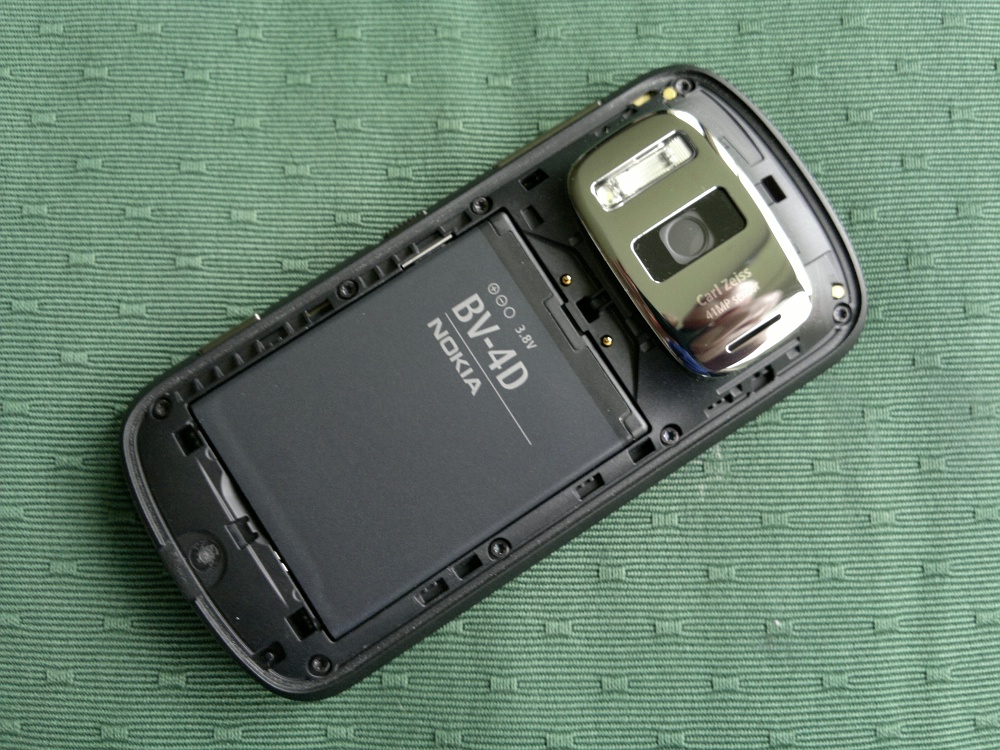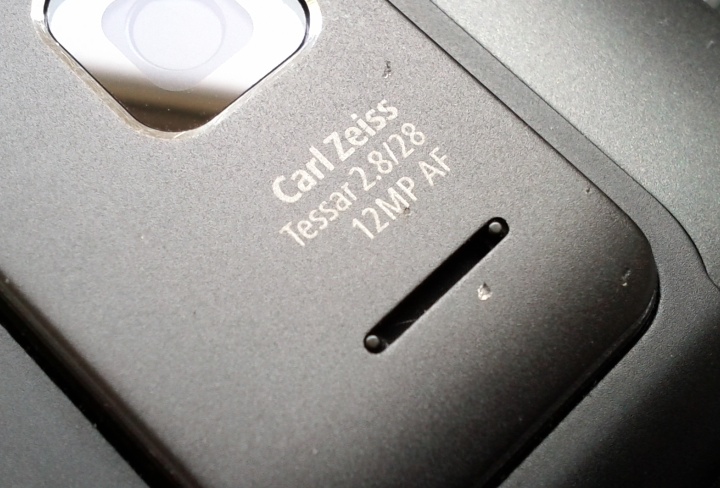You see, as someone with access to every new device from the last 3 years, I still find my main SIM card back in a Symbian device more often than not. Partly because the OS is such a known quantity, filexible yet power-efficient, partly because of Nokia's hardware and gadgetry. So how do I see the 2013 competition in the light of classics like my 808 PureView, running Belle FP2?
Speed
It's completely fair to say that even the Nokia 808 gets blown away for sheer speed by the latest Android flagships. Whether it's web browsing or HD games or even watching something on YouTube, the raw speed of the likes of the HTC One, Sony Xperia Z and others is nothing short of very impressive. That this speed comes with a downside of a decrease in battery life is expected, though mitigated by larger batteries coming as standard now.
Verdict: Symbian loss
Battery life
I'm still amazed by how well Symbian performs in terms of battery efficiency. Yes, you can still hammer a Symbian phone's battery by non-stop gaming or running a 3G data connection all the time in a weak 3G area, but for most people, most of the time, it's comparatively easy to get two days of normal use from one charge if you know what you're doing - I keep data in 2G mode for routine email/social use and then flick on 3G if I need to do any mobile browsing or heavy duty streaming.

In contrast, the Android phones I've used recently tend to be on their last legs after 24 hours and a charge is needed every night. Admittedly, there are similar battery-saving tricks that can be employed to go further, plus there's a definite use case factor creeping in here, in that on a large-screened, fast Android smartphone, there's more of a temptation to play HD games, watch HD videos, browse the web for longer, and so forth, so I'm not really 'comparing apples with apples. But overall, the typical charging life of a Symbian user does tend to be slightly different, and in a good way.
Verdict: no winner
User interface
I don't hold to the assertion that Symbian is old and outdated - this could indeed be argued in the days of S60 5th Edition (the awkward transition to 'touch') and Symbian^3 (eliminating all the 'scroll and select' quirks and introducing a more direct tapping paradigm) and Anna (2011 refresh, including portrait QWERTY input). However, the update to Belle (with Refresh and FP1/FP2) brought a much more modern use of the bottom-of-screen area, with context sensitive icons and functions, with consistent visual effects, flexible home screens and more.
The combination of homescreens (widgets, shortcuts, toggles) and a scrolling application menu is very comparable to that on Android and arguably superior to the iPhone's limited overall app launching/access UI. That some specific applications (Web, Social, Store) are still a bit slow and clunky is more down to 'speed' (see above).
In a perfect world, some manufacturer would have crafted a perfect user interface by now. Making the likes of Symbian, iOS, Android and so on look rather second rate. Meego Harmattan was as close as I've seen to perfection and even that I'd only rate as 80%. Ditto the new Blackberry 10. Maybe, with user preferences so varied, there is no such thing as a perfect user interface? In which case the playing field is quite level and I'd put Symbian in its Belle form up in the same bracket as the competition with no hesitation.
Verdict: no winner

Photography and video capture
Nokia has had a lead in imaging for years, happily meaning that its Symbian flagships inherited the best that Nokia's R&D labs could create. Nokia's designers also had the courage to think about camera functionality first (larger sensors, Xenon flash) and worry about device thickness afterwards - something no 2013 manufacturer has been brave enough to contemplate.
So we're left with the position that the top two smartphones in the world, rated by camera ability, are the 2010 Nokia N8 and 2012 Nokia 808, both running Symbian Belle. Which has got to be galling for the competition - I cannot believe that after all this time we haven't seen a real camera-specialist Android smartphone. The Motorola XT720 was the last, three years ago - and that was deeply flawed. And no, the Samsung Galaxy Camera doesn't count as it's not really a phone.
[The Nokia 808 also wins out for video capture, with its stereo Rich Recording, its in-video lossless zoom, and so on]
Verdict: Symbian win
Music and multimedia
This was another area which Nokia had a big lead in, again spearheaded by its Symbian phones. Devices from the N95 onwards had the best audio quality chips and best supplied headphones, while Symbian's video playback facility and codec support has only got better through the years. The physical limits of the hardware, with nHD resolution, have held things back in recent years though. Meaning that we're left with the very top Android handsets winning out, having both very good audio output and true HD screens with which to display video content.
Verdict: Symbian loss
Applications
It still pains me to think of Nokia's use of an on-device app store, Download!, way back in 2005, three years before Apple popularised the concept. Despite calls from me for them to do more with the idea, Nokia put almost zero effort into the idea, relying on it to push just a few trial apps and items from selected publishers, with the result that Apple completely and utterly stole its thunder.
Fast forward to 2013 and applications now routinely come out for iOS and Android first, with other platforms a distant third option for developers. With the help of my own knowledge of the Symbian apps and Symbian games world, I can make do (fairly handsomely) with the application set available for Symbian, covering office, social, multimedia, leisure, and so on, but I do accept that many household app names just aren't represented on Symbian, and probably never will be.
Verdict: Symbian loss
Build and reliability
Having mentioned Nokia heavily above, it's fair to include build and reliability as a factor in the choice of smartphone. Nokia has produced its share of 'plastic fantastic' stinkers, it's true (the N81, 6630 and even N97 all come to mind), but there have also been some massive reliability 'hits', with devices like the indestructible E71, E51, E90 and N8 leading the charge. It's still a truism that if you drop a Nokia then you pick it up and dust it off, perhaps ruing another small scratch or dent, while if you drop an iPhone or similar then you're more likely to be seeking out a repair centre immediately.
There have been some ruggedised Android phones made in the last few years, mind you, each of which I've liked, but each has also come with some usability compromises. I'd argue that Nokia simply makes its devices better. And my Symbian-powered N8 has the battle scars to back this up.
Verdict: Symbian win

Spot the dents in the metal back of my N8. Roughly one 'ding' for every drop onto concrete/tarmac. What's that, you're asking at the back? No, this has never needed repairing. Everything still works as well as on the day I got it. It's called build quality(!)
____________
Add it all up and a loss by only 3-2 seems rather at odds with the industry's abandonment of Symbian in terms of interest and development. What do you think? Do you agree with my assessments and can you think of other areas in which Symbian as a mobile OS beats the 2013 competition?
PS. Observant readers will note that I haven't mentioned Windows Phone above - with Nokia (and its specialisms and hardware prowess) now making Windows Phone devices, there's clearly some crossover from the world of Symbian under Nokia. I'll make this the subject of a future comparison piece. Watch this space.
No hay comentarios:
Publicar un comentario